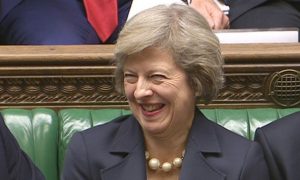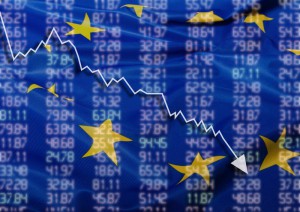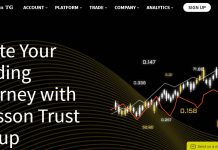EU keeping Prime Minister “in the dark” over Stage Two plans
 Theresa May shifted the blame for the lack of clarity being felt by U.K. businesses over how the post-Brexit trading landscape will look firmly onto the EU yesterday.
Theresa May shifted the blame for the lack of clarity being felt by U.K. businesses over how the post-Brexit trading landscape will look firmly onto the EU yesterday.
She told business leaders who visited her in Downing Street that no matter what concessions she or her Ministers make that the EU side simply accept them without any comment.
As the U.K. inches towards a hard Brexit with talks on stage two now unlikely to even start until March next year, business investment continues to fall.
There has been no discernible progress at all in the talks with both sides producing almost metronomic comments that blame the other side for the stalemate.
Since the EU is not making any effort to move at all, particularly on the subject of the budget contribution, refusing to even put a number it will accept on the table, Mrs May could benefit. She can point to speeches in Florence and Brussels that have failed to be acted upon by M. Barnier and his team although the Irish Border and treatment of EU citizens remain in the U.K. after Brexit remain unresolved.
Inflation: Can’t live with it, can’t live without it!
 The macho view of the dollar which must be strong to emphasize the global dominance of the U.S. is working against U.S. exporters who see their competitors domiciled in countries that have a weak currency prospering due to their lower costs.
The macho view of the dollar which must be strong to emphasize the global dominance of the U.S. is working against U.S. exporters who see their competitors domiciled in countries that have a weak currency prospering due to their lower costs.
One of President Trump’s only consistencies is the continued attacks on nations artificially weakening their currency to gain a trade advantage over the U.S. He conveniently forgets the lower cost base and greater efficiency, particularly in Asia that has attracted U.S. manufacturers who have relocated to those countries.
One other consequence of the stronger currency is that is counter-inflationary (witness the situation in the U.K. where the opposite is true). The U.S. continues to have additional stimulus in its economy, yet inflation remains stubbornly low. This is concerning FOMC members who have hiked rates twice in 2017 and will do so once more as their actions are likely to lower inflation further. The release of price data tomorrow will see the headline for October at close to 2%.
The Eurozone and its members will issue collective and individual data for October on Thursday. Benign doesn’t describe region wide inflation which is likely to be just 1.4%, totally justifying Mario Draghi’s comments on monetary policy.
Error, group does not exist! Check your syntax! (ID: 4)
Euro fall in Q1 could bring inflation
 The widening of the gap in monetary policy between the Eurozone and U.S. could see a fall in the single currency early in the new year. It is unlikely to reach the lows seen this year but a break of the support at 1.1620 could see a rapid decline.
The widening of the gap in monetary policy between the Eurozone and U.S. could see a fall in the single currency early in the new year. It is unlikely to reach the lows seen this year but a break of the support at 1.1620 could see a rapid decline.
The Prospect of a far stronger dollar in 2018 is the centre piece of several longer-term investors view for the coming year. Sterling is “dead in the water” with a hard Brexit becoming ever more likely while asset prices in the U.S. continue to make fresh highs. This is one of the main drivers for the FOMC, but they are very aware of previous actions bringing the collapse of what is being viewed as a bubble as with dot com in the late nineties.
Inflation could return to the Eurozone if the common currency sinks close to 1.1000 versus the dollar and while this will help a few the smaller nations to grow, it will sound alarm bells in Germany given their “inflation phobia”.
The markets will start to slow down in the next two or three weeks as year-end approaches While liquidity will thin out, there will still be opportunities before a decision needs to be made on the dominant stores for 2018.








![Reltex Group Reviews: Explore business opportunities by Trading [reltexg.com]](https://comparic.com/wp-content/uploads/2023/12/image001-218x150.jpg)
![Mayrsson TG Reviews: Why Choose Crypto-Trading with Them? [mayrssontg.com]](https://comparic.com/wp-content/uploads/2023/12/image1-218x150.jpg)








